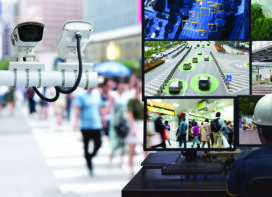Maurice D?Souza, Chief Operating Officer, CMS Computers Ltd talks about the relevance of ITS in India and the challenges in its widespread implementation.
What importance of ITS do you see in today?s traffic scenario in the country?
ITS is quickly gaining relevance and importance in the Indian traffic scenario. An ITS with a proper architecture looks at optimisation of the infrastructure. In the Indian scenario where the big cities are almost saturated with very low scope of infrastructure improvement, implementation of ITS ensures effective traffic handling within the limited infrastructure. ITS implementation vis-?-vis development of new infrastructure is a great value for money and Return on Investment (ROI). In Mumbai, for example, the implementation of ATC (Area Traffic Control), a component of ITS, has resulted in 17% reduction in congestion levels and travel time. However, ITS does not underplay the need for new infrastructure development. I think India?s answer lies in a combination of new infrastructure development and ITS implementation.
What range of products and services do you provide in the ITS segment?
CMS has always been a market leader in traffic systems and has pioneered the introduction of new cutting edge technologies. We have our own manufacturing setup for traffic signal controllers and ancillary products like LED Lights, Count Down Timers & Blinkers. We also have strategic partnerships with international technology leaders in various ITS segments like Adaptive Traffic Control System, Speed Violation & Red Light Violation Detection Systems, Automatic Incident Detection based on video or radar, Variable Message Displays, Passenger Information Systems, Automated Vehicle Counters and Classifiers.
How has the collaboration with Peek Traffic Systems, UK helped you in setting up the ATC System?
Peek has a vast experience in implementing SCOOT based area traffic control system worldwide. As is known, the traffic situation in India is entirely different from the European traffic situation. When CMS joined hands with Peek to deliver the first ATC implementation in India, it was actually a balanced mix of international implementation ? expertise of Peek coupled with indigenous traffic engineering expertise of CMS that made this project a resounding success. The advantage of the open systems & solutions that CMS provides will be evident when you look at another classic example of ATC implementation in Mumbai where we had joined hands with Telvent who also have immense international implementation expertise. Both these experiences have enriched our knowledge base and provided us an exposure to international practices in design & implementation of ITS projects. These have also helped us understand and amply demonstrate the importance of traffic engineering aspects in optimising benefits of ATC, and have also enhanced our project management & O&M skills.
What challenges do we face in effective use of ITS in public transport in the country ? both urban and inter-urban?
I feel the biggest challenge is the willingness (rather the lack of it) of authorities to proficiently adopt modern, sometimes nascent, technology. However, more and more cities and smaller towns are now keen to implement such systems when they see or hear the success stories in the bigger cities. But there is also a considerable lack of knowledge and many misconceptions around the end users of the system. That calls for a systematic training and awareness programme. The other challenge is that one needs to carefully customise international technologies to suit Indian traffic conditions. That makes the choice of the right implementation partner quite critical. One cannot simply ?copy and paste? an international implementation model onto a small town or a big city in India. Also, the Indian traffic scenario, at present, completely lacks defined standards and practices suitable for Indian traffic. There needs to be a more concerted effort in defining what suits our country best. CMS, as one of the pioneers in this field, would only be glad to play a role in formulation and adoption of these ?Indianised? standards.
What role can CMS?s Pedestrian Access System play in making roads more pedestrian-friendly?
CMS provides pedestrian access system engineered for Indian traffic conditions. It is equipped with visual (video) and audio indications. Push buttons are provided for pedestrians to demand the right-of-way. The entire system is integrated to a central controller which does not ignore vehicular flow completely at the cost of pedestrian access and vice versa. It is a carefully engineered, programmable and adaptive system that responds simultaneously and effectively to both pedestrian and vehicular demands. These devices have in-built audible frequencies specially selected to differentiate various pedestrian phases like start of pedestrian walk time, pedestrian green time, and alert for transition to pedestrian red. It even indicates the registration of a pedestrian demand. This combination of audio and visual alarms is extremely friendly to even visually impaired pedestrians.
Any new ITS products, services or projects in the pipeline?
We have successfully developed a scaled down ?control-room version? of the ATC system. Called ?Trafview?, it is currently under implementation in one of our ongoing projects near Mumbai. It is a web based application that integrates a number of traffic signals and allows visualisation and supervisory access from the central control room. It can be easily integrated with junction surveillance systems. Significantly, it is easily upgradeable to a full-fledged ATC system. It is the perfect solution for the innumerable small cities and towns of India which currently do not intend to go in for a full-fledged and expensive ATC system, but would rather do it in short steps, with small budgets but without losing sight of the final goal. There are many other ideas which we are working on.
 TrafficInfraTech Magazine Linking People Places & Progress
TrafficInfraTech Magazine Linking People Places & Progress



